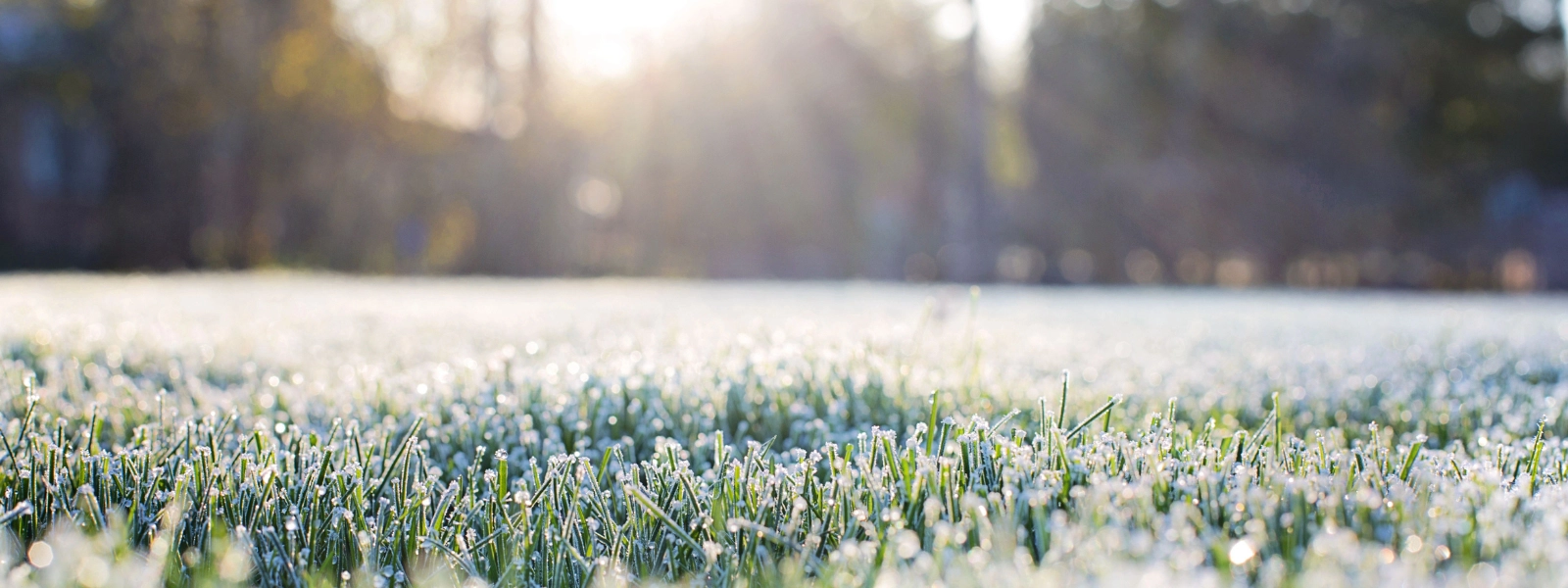Winter Lawn Care Made Easy | Tips for Warm Climate Maintenance
Share this post:

- Proper winter lawn care includes controlling winter weeds, adjusting irrigation, and testing soil to maintain lawn health in warm climates.
- Overseeding with ryegrass keeps lawns green during winter, while dormant seeding jump-starts growth for cool-season grasses.
- Minimizing foot traffic on dormant grass, using mulch for protection, and watering wisely help prevent damage and promote strong spring growth.
Winter in a warm climate usually means no snow shoveling, but it doesn’t mean your lawn can take a break. While warm-season grasses like Bermuda, St. Augustine, Zoysia, and Centipede may slow down or go dormant, proper winter lawn care ensures a lush, healthy lawn year-round. From controlling winter weeds to overseeding and soil testing, here’s how to keep your lawn green in winter and set it up for success.
Controlling Winter Weeds
Weeds don’t take a break in winter — especially bittercress, chickweed, and henbit. These cool-season weeds thrive in mild temperatures and can quickly take over your lawn. To prevent them from spreading:
- Apply a pre-emergent herbicide in early fall to stop weeds before they sprout.
- Use mulch to suppress weed growth in garden beds and around trees.
- Hand-pull weeds or use a post-emergent herbicide if they’ve already started growing.
By staying proactive, you can focus on healthy winter lawn care rather than fighting off weeds in the spring.
Protecting Your Lawn from Foot Traffic
Dormant or frost-covered grass is easily damaged by heavy foot traffic, which can compact the soil and slow spring recovery. To prevent damage:
- Limit walking on dormant grass, especially after a frost.
- Use stepping stones or designated pathways to avoid wear.
- Keep debris, furniture, and toys off the lawn to prevent stress on weakened grass.
Overseeding for a Green Winter Lawn
If you want to maintain a lush, green lawn all winter, consider overseeding warm-season grass with cool-season varieties like ryegrass. This technique is a great way to practice keeping your lawn green in winter, even when your main grass slows down. Steps to overseed effectively:
- Mow the lawn slightly lower before spreading ryegrass seed evenly.
- Water lightly and consistently to encourage germination.
- Gradually mow the ryegrass to maintain a neat look.
By spring, the ryegrass will naturally fade, and your warm-season grass will take over.

Dormant Seeding for Early Spring Growth
For cool-season lawns, dormant seeding can be a great way to jump-start spring growth. This involves spreading grass seed in late winter, allowing it to germinate when temperatures rise. To do this:
- Choose a hardy cool-season seed.
- Spread seeds before an expected early spring rain.
- Keep the soil slightly moist to support early germination.
Adjusting Irrigation for Cooler Months
Watering in winter requires a different approach. Too much moisture can cause fungal diseases, while too little can stress your lawn.
- Reduce watering to once or twice a week, depending on rainfall.
- Water in the morning to prevent overnight moisture buildup.
- Only water when the lawn shows signs of drought stress (wilting, dry soil).
Proper watering adjustments are key to winter grass care and preventing disease.
The Importance of Soil Testing
Winter is the perfect time to test your soil and make adjustments before spring. A soil test helps determine pH levels and nutrient deficiencies, allowing for better lawn care planning.
- If the soil is too acidic, add lime to balance the pH.
- If nutrients are lacking, apply organic compost or slow-release fertilizer.
- Healthy soil leads to stronger roots and more lush grass in spring.
Mulching for Lawn & Landscape Protection
Mulch isn’t just for looks — it helps regulate soil temperature, retain moisture, and reduce weeds during winter. Consider:
- Mulching around trees and garden beds to protect roots from temperature fluctuations.
- Using organic mulch options like shredded leaves, bark, or grass clippings.
- Avoiding thick mulch layers that block oxygen from reaching the soil.
A little winter lawn care goes a long way in keeping your lawn healthy and ready for spring. Controlling winter weeds, minimizing foot traffic, overseeding, adjusting irrigation, testing soil, and mulching wisely will help your lawn thrive year-round.
Need expert help? Contact Spring Green for professional lawn care services and keep your lawn in top shape all year round!
